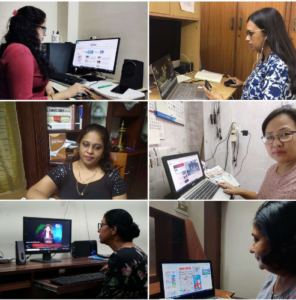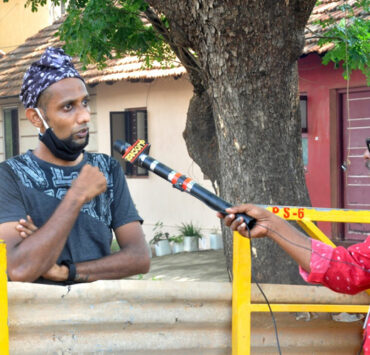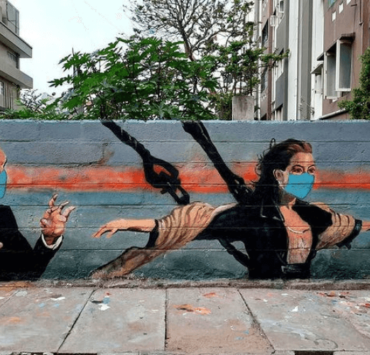
By Padmaja Shaw

Preliminary data from the Global Media Monitoring Project (GMMP) 2020 indicates that the presence of women in Indian news media has declined – albeit with some exceptions – over the past decade.
The overall presence of women as news subjects across media has dropped to 14% in 2020 from 21% in 2015 and 22% in 2010. The latest round of the world’s longest-running and most extensive research on gender in news media (1995, 2000, 2005, 2010, 2015) found that most news subjects (86%) still tend to be men.
On Internet and Twitter platforms female subjects were 21% (69) and 29% (30) respectively in 2020. In 2015, 26% of people in Internet news and media news tweets combined were women. Online media were not part of the India’s GMMP effort in 2010.
Ten years ago (2010), women news subjects were reported at a low of 13% in radio news. At that time women as news subjects were 24% in print and 20% on TV.
In 2020, the combined figure for women as news subjects and sources in radio news is a mere 5%, while print and television had 15% women each as news subjects and sources. The latest numbers appear to indicate a decline in women’s overall presence as news subjects and sources in the Indian news media.
A report with currently available preliminary data from GMMP 2020 was shared in the public domain on 3 March 2020. The preliminary report includes verified data from just over 90 out of the 120 countries that participated in the 2020 monitoring exercise. A wealth of additional information and analysis will be made public in a few months.
The final report will present a gender analysis of changes in the presence, representation and voice of subjects and sources in mainstream newspapers, radio and television newscasts, influential news websites and news media tweets in 120 countries.
The latest numbers appear to indicate a decline in women’s overall presence as news subjects and sources in the Indian news media.
The GMMP 2020 exercise in India revealed that only 12.5% (7) of the journalists covering news in the print media were women, compared to 87.5% (49) who were men. On radio, 21% (12) of the news presenters were women, while 79% (45) were men; only two reporters were featured, both men. The situation in TV news was better, with 53% (93) of the presenters being women and 43% (70) men presenters.
This marks a significant change from 2010, when 45% of the presenters were women and 55% men. In Internet news sources, which are newer and often assumed to be more progressive than legacy media, only 32% (11) of the reporters were women in 2020, while 68% (23) were men. On Twitter, however, 51% (37) of the reporters were female, compared to the 49% (35) that were male.
Another discouraging decline from 2010 is the percentage of stories that challenge gender stereotypes. In 2010, two-thirds (63%) of the stories did not challenge gender stereotypes. The monitoring in 2020 found that the situation had worsened dramatically: the overwhelming majority of stories (95%) did not challenge stereotypes, while just 5% of the stories clearly challenged such stereotyping.
The original monitoring day for this round of the GMMP was 2 April 2020, and the final country and global reports were meant to be launched by September 2020. However, the Covid-19 pandemic intervened and, with lockdowns declared across much of the world, there was no option but to postpone the whole process. Finally, September 29 was picked as the new coding day. As in the past, only news stories from general news pages, prime time TV, etc., were included in the monitoring.

Pages devoted to entertainment, features, opinion/commentary, business and sports are not included in the sample. The India team, comprising 30 monitors (including several NWMI members) based in different parts of the country, coded 20 newspapers, 13 TV news channels, 5 radio channels, 8 news websites and 8 news Twitter handles in 14 languages. A total of 901 stories were coded and analysed.
Unlike in earlier rounds of the GMMP, face-to-face interactions and group work were not possible this time in view of the pandemic. Trainings and consultations were all done online. Data coding was also done using online templates. The digitised forms were actually easier to work with and the direct use of data forms online reduced the margins of error that often mar manual processing systems.
A comprehensive report on the GMMP 2020 findings relating to Indian media will be shared in a few months after more granular analysis. The impact of Covid-19 and the resulting lockdown on the numbers also will also be explored further.
Another discouraging decline from 2010 is the percentage of stories that challenge gender stereotypes.
Meanwhile, however, it is a matter of concern that the preliminary data that is currently available flags new challenges, with the invisibility of women in Indian media evidently on the rise from 2010 to 2020.
It is disappointing that 25 years after the first round of the GMMP, launched in the run-up to the Fourth World Conference on Women (Beijing) in 1995, the news media across the world, and in India, are still far from inclusive spaces for women, all the more so for women from vulnerable sections of society and historically marginalised groups.
ACKNOWLEDGEMENTS
Members of the GMMP 2020 monitoring team in India: Anjana George, Anubhuti Yadav, Archana Kumari, Ayesha Tahera, Dev Vrat Singh, Jagriti Chandra, Jyoti Prakash Mohapatra, Kanchan K Malik, Kirti Singh, Kavitha Muralidharan, Mallika, Manju Rose Mathews, Monisa Qadri, Nikhat Fatima, Nimmi Chauhan, Punitha B, Pushpa Achanta, Hima Bindu, Rajeshwari Kalyanam, Shilpa Hattiangadi, Shobana MR, Shruthi Mohan, Simran Sidhu, Suchitra Patnaik, Sweta Singh, Tanvi Khemani, Thingnam Anjulika, Thulasi Chandu, Smita Ramanathan, Mou Mukherjee Das.
Previous Reports
Global Media Monitoring Project 2015: https://nwmindia.org/resources/research-and-documentation/gmmp-2015-progress-for-women-in-news-media-grinds-to-a-halt/
Global Media Monitoring Project 2010: https://nwmindia.org/resources/research-and-documentation/who-make-news/
Padmaja Shaw is an academic and independent journalist. She led the GMMP 2020 in India on behalf of the NWMI.




